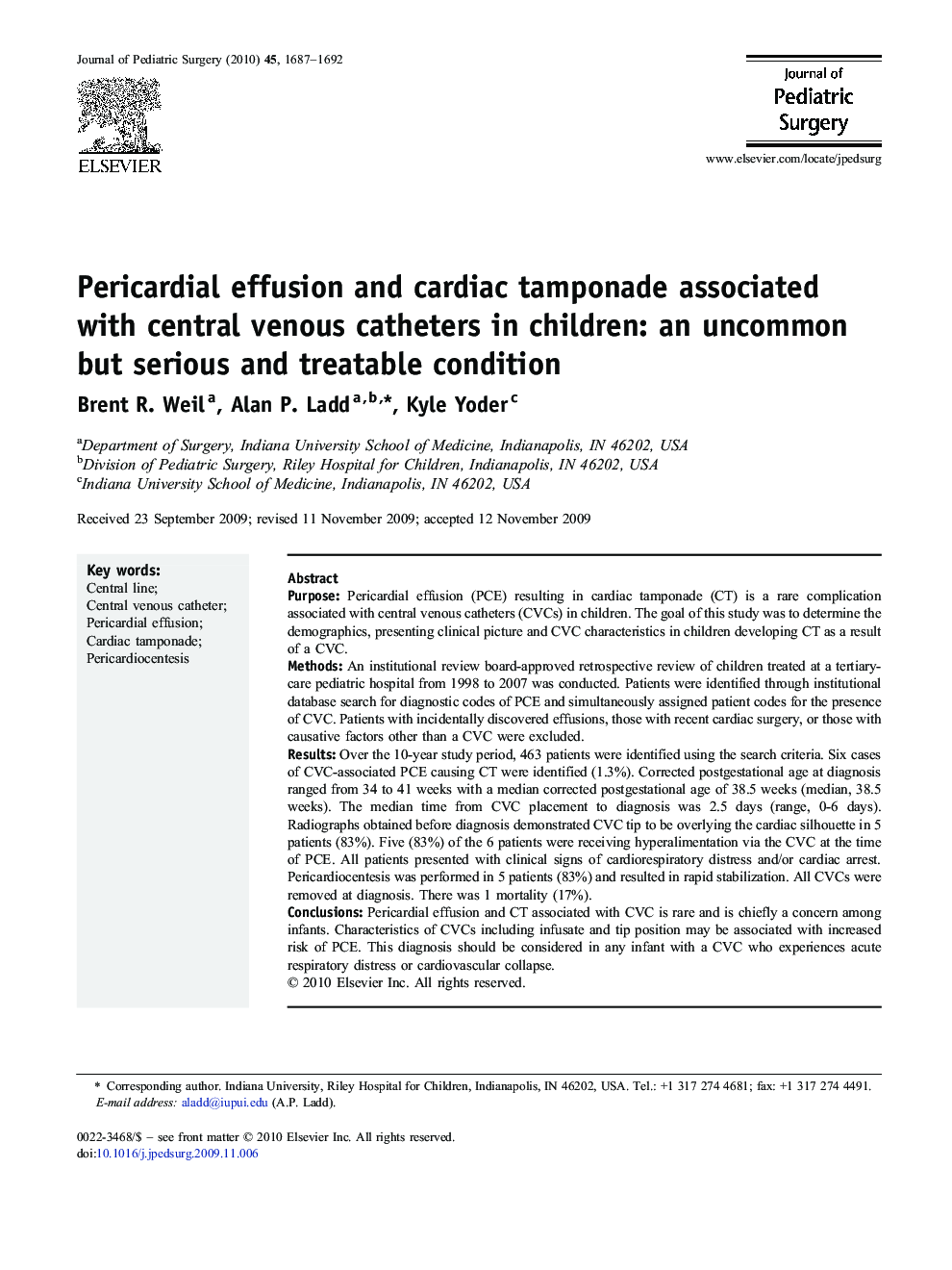| Article ID | Journal | Published Year | Pages | File Type |
|---|---|---|---|---|
| 4158152 | Journal of Pediatric Surgery | 2010 | 6 Pages |
PurposePericardial effusion (PCE) resulting in cardiac tamponade (CT) is a rare complication associated with central venous catheters (CVCs) in children. The goal of this study was to determine the demographics, presenting clinical picture and CVC characteristics in children developing CT as a result of a CVC.MethodsAn institutional review board-approved retrospective review of children treated at a tertiary-care pediatric hospital from 1998 to 2007 was conducted. Patients were identified through institutional database search for diagnostic codes of PCE and simultaneously assigned patient codes for the presence of CVC. Patients with incidentally discovered effusions, those with recent cardiac surgery, or those with causative factors other than a CVC were excluded.ResultsOver the 10-year study period, 463 patients were identified using the search criteria. Six cases of CVC-associated PCE causing CT were identified (1.3%). Corrected postgestational age at diagnosis ranged from 34 to 41 weeks with a median corrected postgestational age of 38.5 weeks (median, 38.5 weeks). The median time from CVC placement to diagnosis was 2.5 days (range, 0-6 days). Radiographs obtained before diagnosis demonstrated CVC tip to be overlying the cardiac silhouette in 5 patients (83%). Five (83%) of the 6 patients were receiving hyperalimentation via the CVC at the time of PCE. All patients presented with clinical signs of cardiorespiratory distress and/or cardiac arrest. Pericardiocentesis was performed in 5 patients (83%) and resulted in rapid stabilization. All CVCs were removed at diagnosis. There was 1 mortality (17%).ConclusionsPericardial effusion and CT associated with CVC is rare and is chiefly a concern among infants. Characteristics of CVCs including infusate and tip position may be associated with increased risk of PCE. This diagnosis should be considered in any infant with a CVC who experiences acute respiratory distress or cardiovascular collapse.
